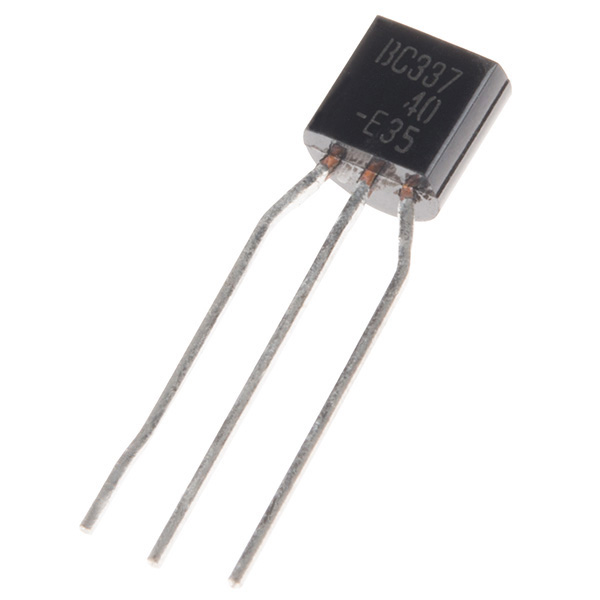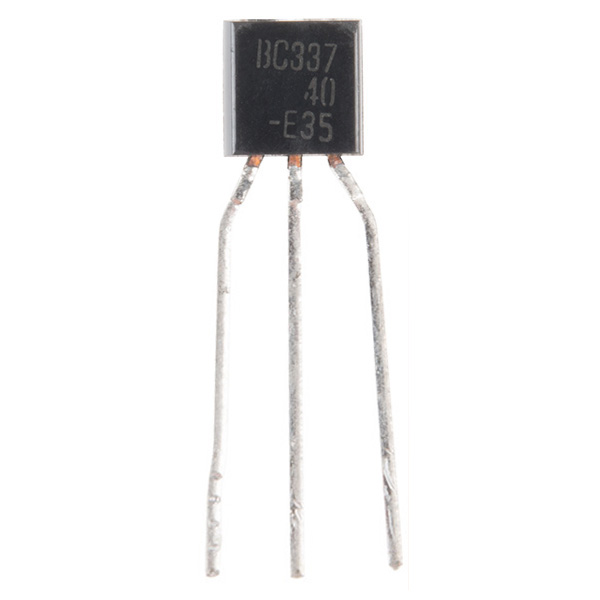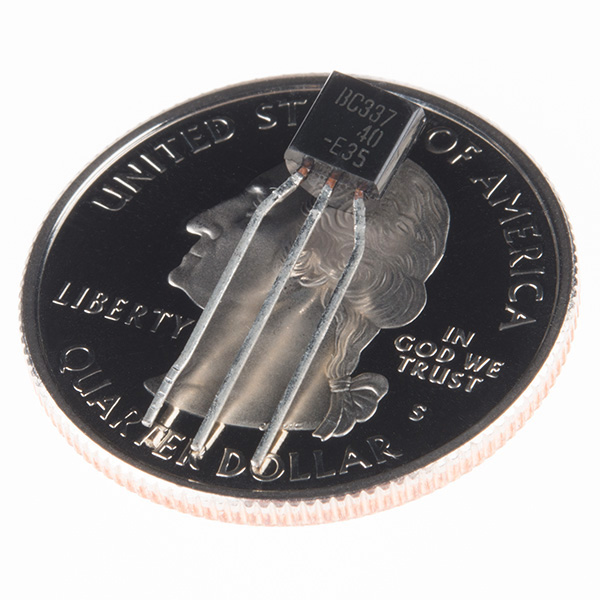Transistor - NPN, 50V 800mA (BC337)
This is the BC337, an NPN silicon BJT (Bipolar Junction Transistor). This little transistor can help in your project by being used to help drive large loads or amplifying or switching applications. The BC337 is specifically rated at 50V and 800mA max.
Note: The BC337 is a drop-in replacement for the P2N2222A Transistor
Transistor - NPN, 50V 800mA (BC337) Product Help and Resources
Transistors
July 1, 2014
A crash course in bi-polar junction transistors. Learn how transistors work and in which circuits we use them.
Core Skill: Electrical Prototyping
If it requires power, you need to know how much, what all the pins do, and how to hook it up. You may need to reference datasheets, schematics, and know the ins and outs of electronics.
Skill Level: Competent - You will be required to reference a datasheet or schematic to know how to use a component. Your knowledge of a datasheet will only require basic features like power requirements, pinouts, or communications type. Also, you may need a power supply that?s greater than 12V or more than 1A worth of current.
See all skill levels
Comments
Looking for answers to technical questions?
We welcome your comments and suggestions below. However, if you are looking for solutions to technical questions please see our Technical Assistance page.
Customer Reviews
No reviews yet.





A drop in replacement for the P2N2222 but not the 2N2222, which is a mirror image. TO92 pinouts are a nightmare. Beware when you buy a grab bag of unmarked transistors elsewhere.
This would be a GREAT deal, if it would actually handle 8 amps, as the title says... Unfortunately, "The BC337 is specifically rated at 50V and 800mA max." NOT 8,000mA!
Any reason why this transistor is not in the general IC category with all the other transistors?
That's a pretty steep price for a general-purpose transistor (even when it has good specs). At least I would expect a discount for quantities. At www.conrad.com I pay 0.08 euros (about 0.07 dollar) for one, 0.06 euros (about 0.05 dollar) @100.
This is one of those things that if you only need 1 or 2 and are already placing an order it is nice to grab and not have to pay shipping from Digikey or somewhere else. If you need large quantities I'd definitely go somewhere else. Feel free to email our techsupport team if you have any questions on this including a link to this part on Digikey.
It's funny how people don't understand this concept.
The datasheet link isn't working. Just a heads up.
Oh, now it's working.
I'd like to use this to switch 5V DC, using a 3.3V signal from a Raspberry Pi. Based on the data sheet I think it's suitable but wondering if anyone can confirm.
Well, it's been 4 months, but yes, it'll totally work. And it can handle a good deal of current.